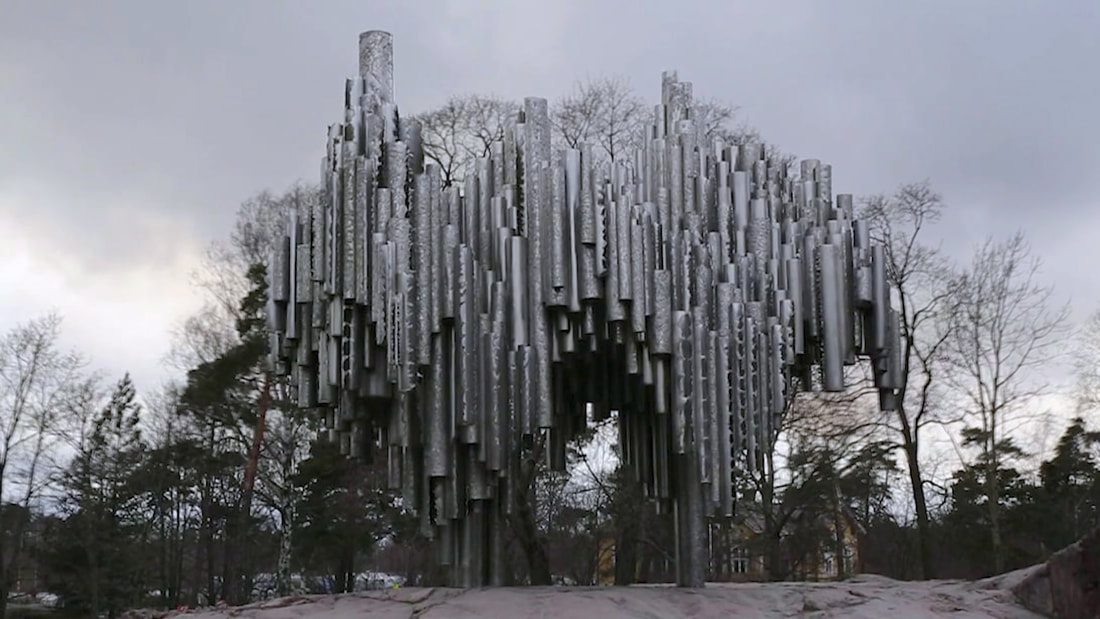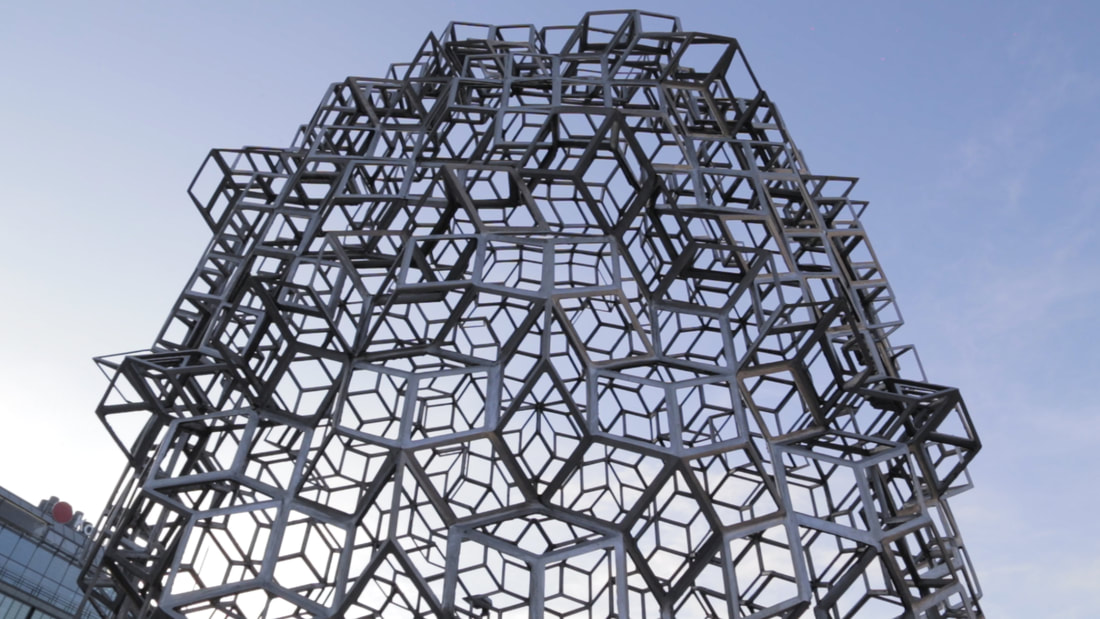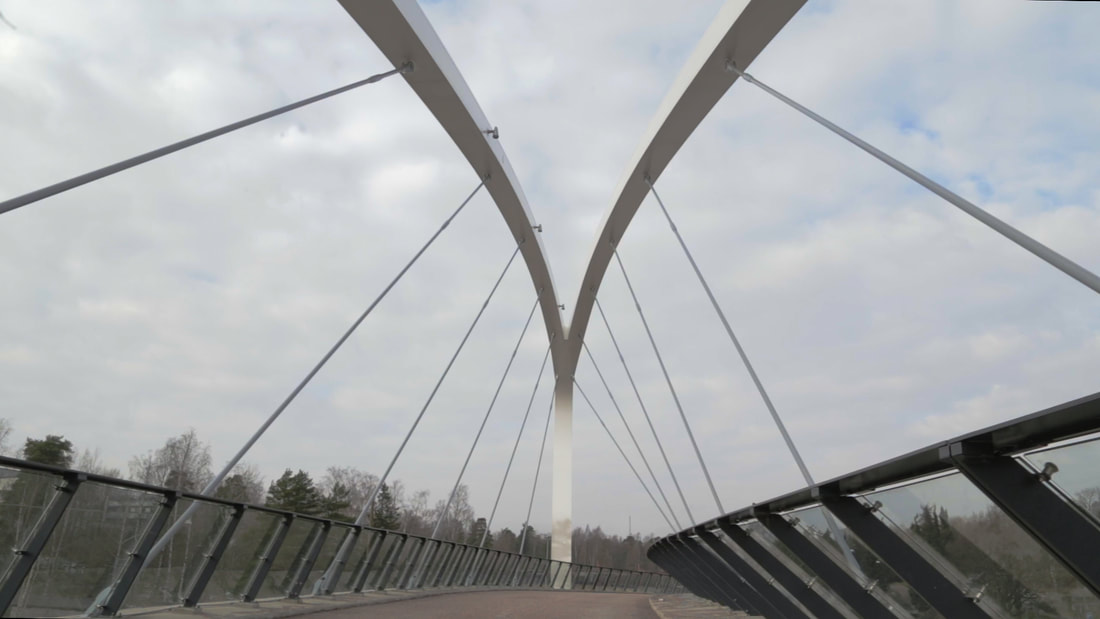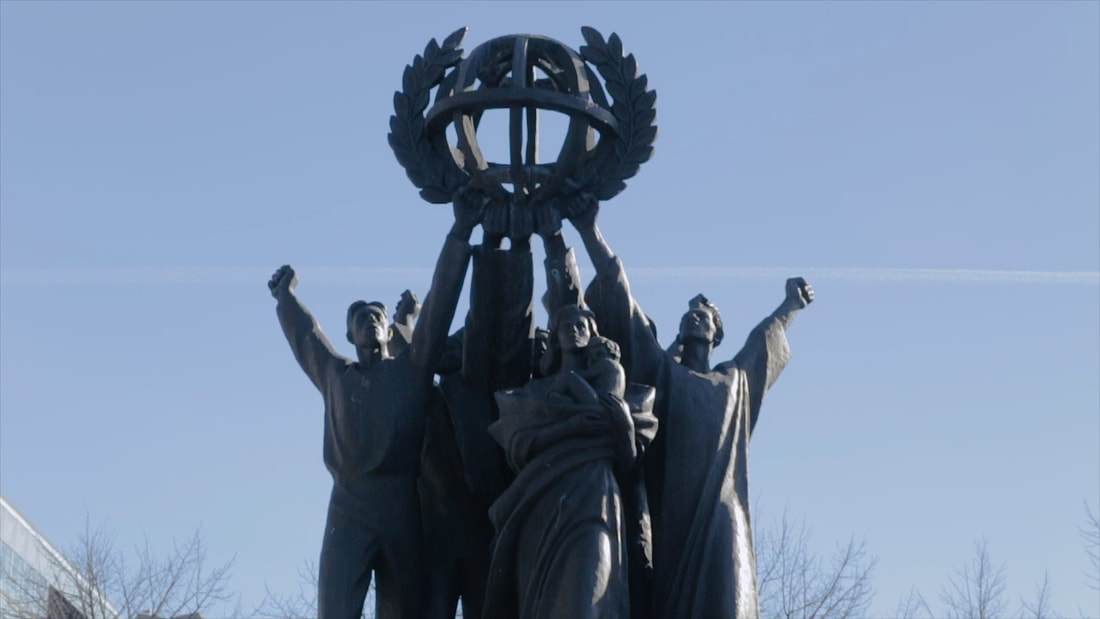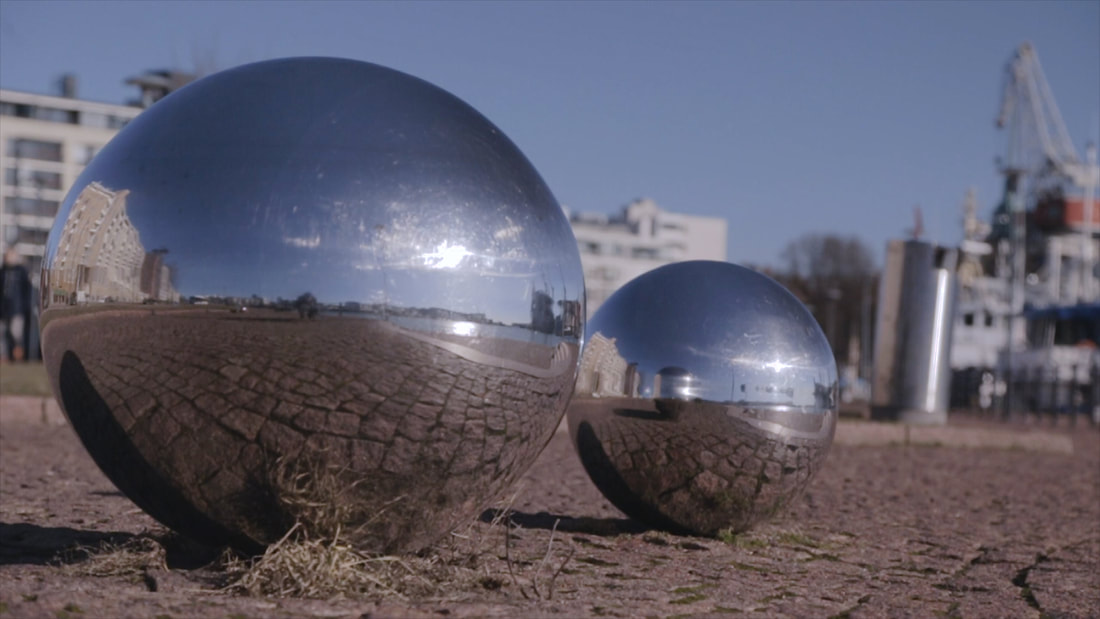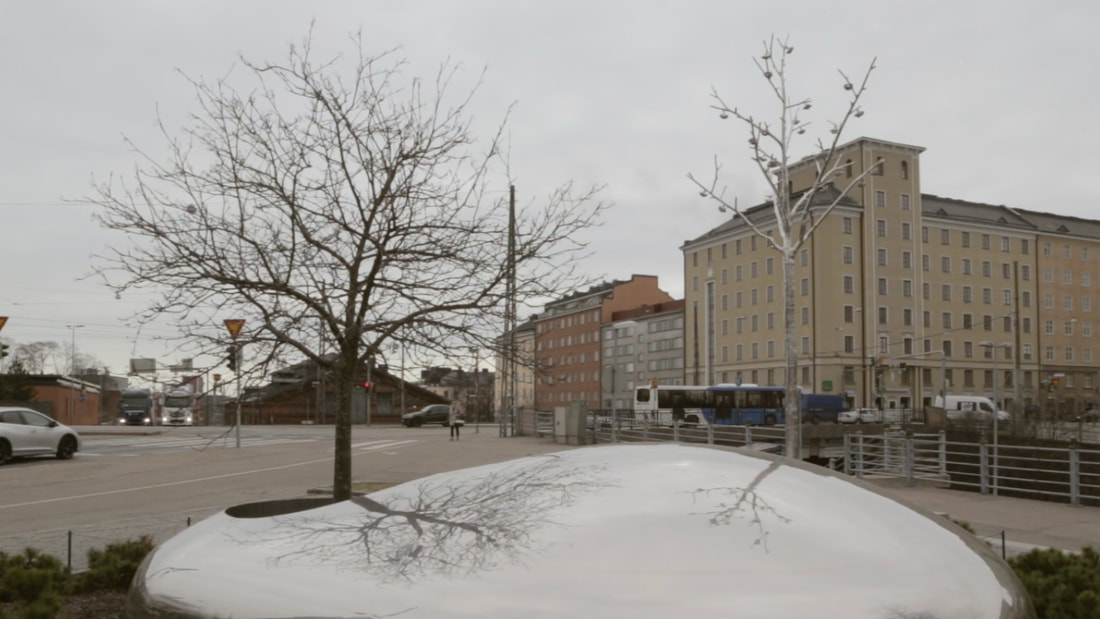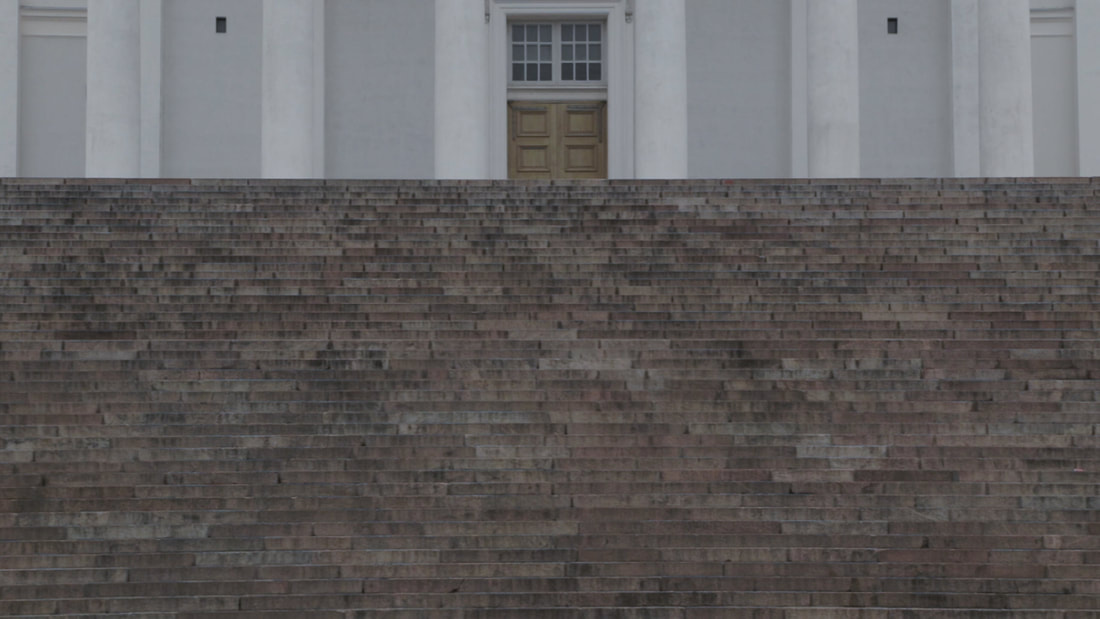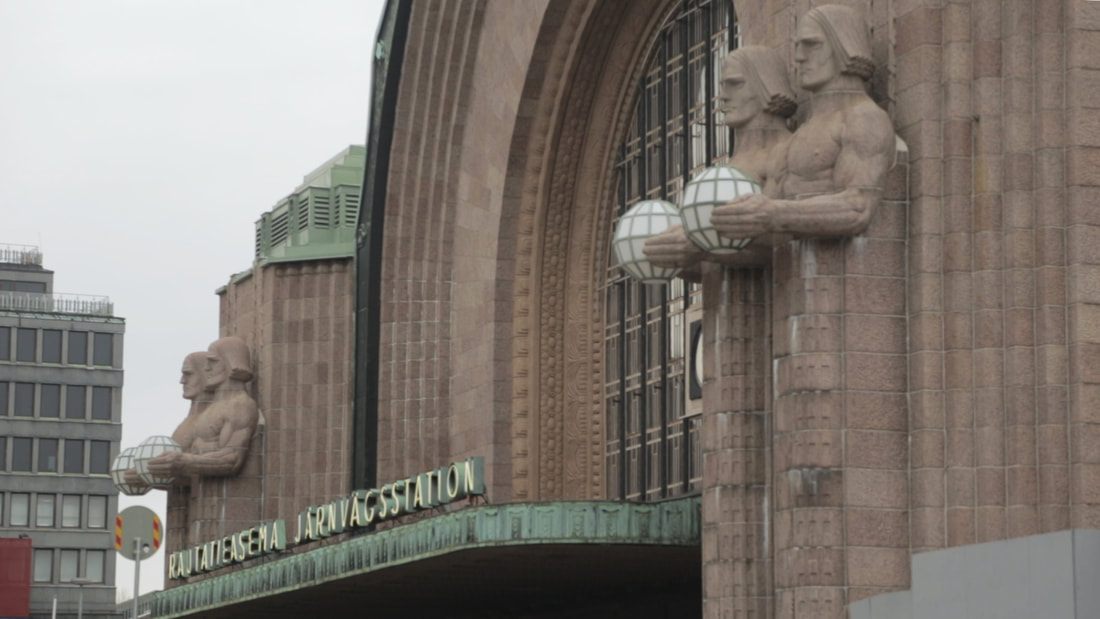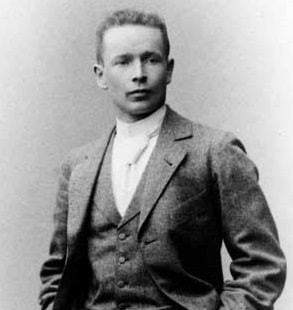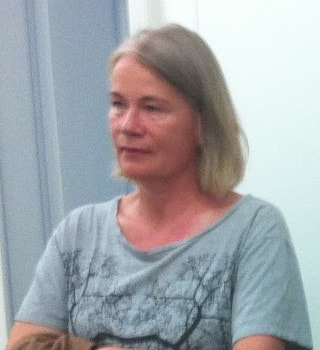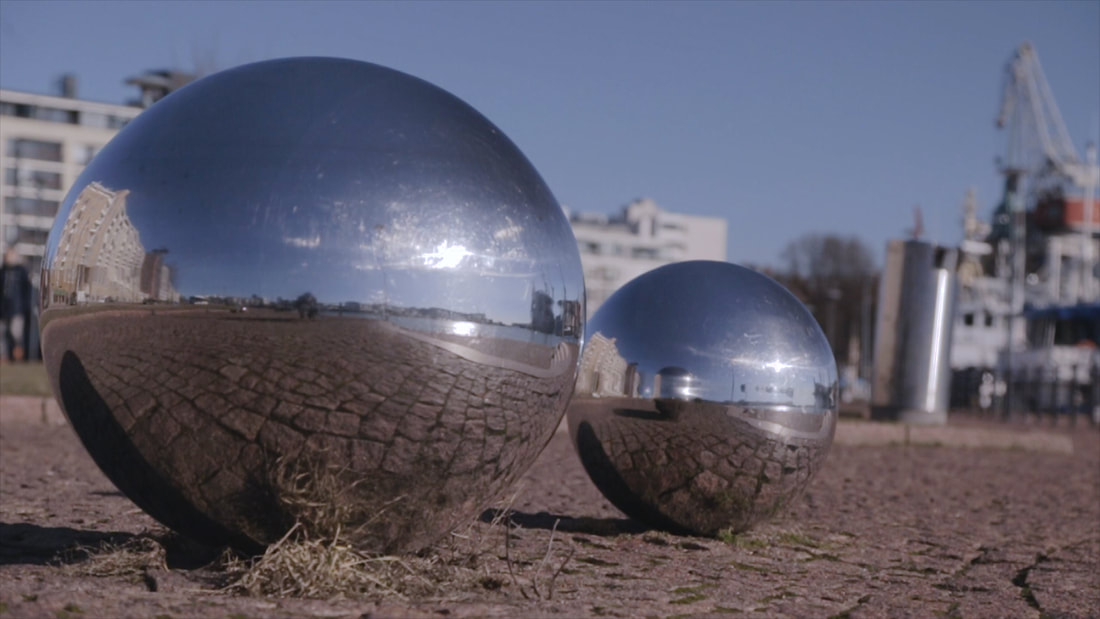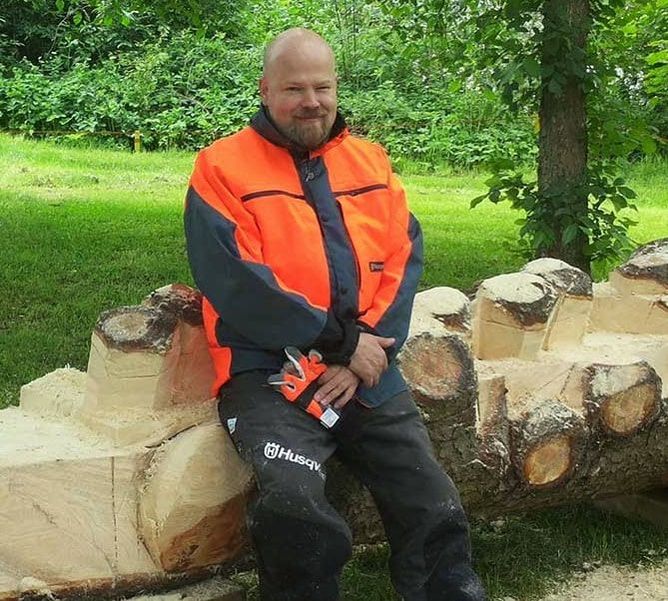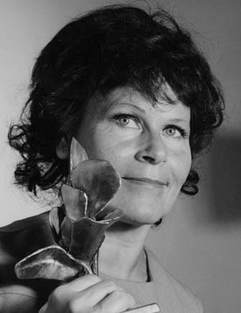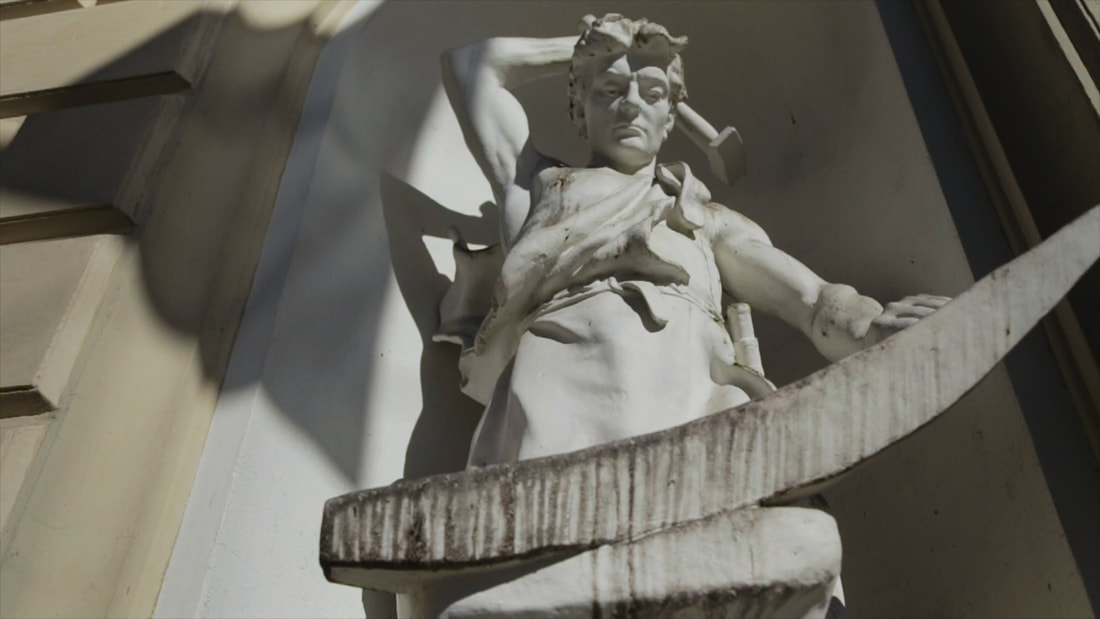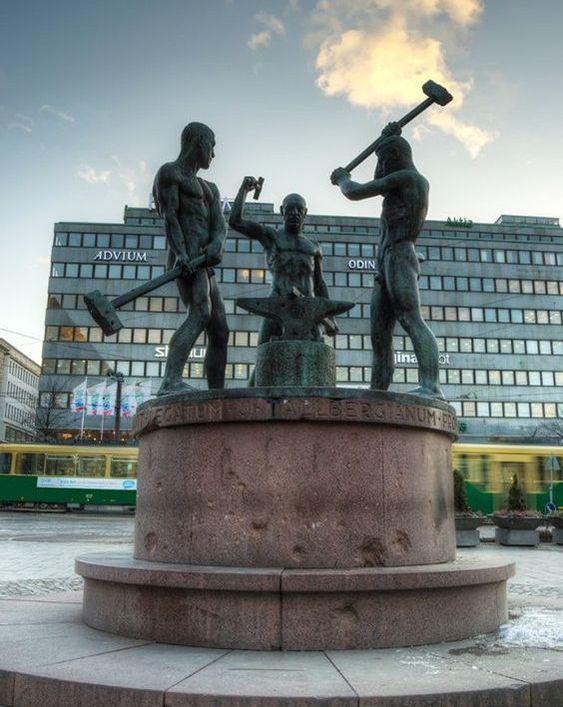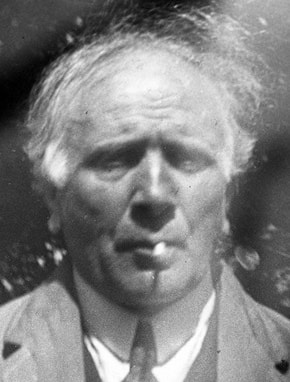Psi
Menu
HELSINKI
Below is a presentation of the artwork and locations in Helsinki,
in order of appearance in the film.
Below is a presentation of the artwork and locations in Helsinki,
in order of appearance in the film.
|
|
Helsinki Public Works Department Building
|
The Helsinki Public Works Department (Rakennusviraston asiakaspalvelu) is responsible for the planning, construction and maintenance of streets and green areas in Helsinki as well as parking control. The planning and commissioning of City premises are also a part of their duties. The Public Works Department building is located on Elimäenkatu 5 and has a courtyard with a tree.
|
Helsinki Cathedral
The Helsinki Cathedral (Finnish: Helsingin tuomiokirkko, Suurkirkko) is the Finnish Evangelical Lutheran cathedral of the Diocese of Helsinki, located in the neighborhood of Kruununhaka in the center of Helsinki. The church was originally built from 1830 to 1852 as a tribute to the Grand Duke of Finland, Tsar Nicholas I of Russia. A distinctive landmark in the Helsinki cityscape, with its tall, green dome surrounded by four smaller domes, the building is in the neoclassical style. It was designed by Carl Ludvig Engel as the climax of his Senate Square layout: it is surrounded by other, smaller buildings designed by him, including The Senate (now the Palace of the Council of State), the City of Helsinki Town Hall, and the library and the main building of Helsinki University. The church's plan is a Greek cross (a square center and four equilateral arms), symmetrical in each of the four cardinal directions, with each arm featuring a colonnade and pediment.
|
Carl Ludvig Engel (1778 - 1840), was a German architect known for his Empire style, a phase of Neoclassicism. He had a great impact on the architecture of Finland in the first part of the 19th century, not just as an architect but also as the head of the Intendent's Office, which was responsible for all key public buildings throughout the country.
|
Unioninkatu 29, 00170 Helsinki, Finland
|
Helsinki Pyramid Skylights
|
Several pyramid-shaped glass skylights can be found in central Helsinki on Kaisaniemenkatu by the metro stop Kaisaniemen Metroasema. They serve as skylights for the commercial galleries below and at night, they are lit up by neon lights.
Kaisaniemenkatu 7, 00100 Helsinki, Finland
|
Maailman rauha / World Peace
Oleg Kirjuhin
Oleg Kirjuhin
|
`World Peace' is a bronze sculpture by Russian artist Oleg Kirjuhin that was donated by the City of Moscow to the City of Helsinki and unveiled on January 14, 1990. The donation was a part of the Cities' friendship and cultural exchange program. Helsinki's gift to Moscow was Antti Neuvonen's sculpture `Friendship of the people' which was placed in a park specifically designed for donated sculptures. "World Peace" is an example of Soviet Socialist Realism. Cast in bronze and 6.5 meters high with its pedestal, it comprises five figures representing the inhabitants of the five continents. The figures, supporting a globe decorated by foliage, are participating in a demonstration, fists raised in defense of peace. At the unveiling, Helsinki's Lord Mayor Raimo Ilaskivi noted in his speech that the work is powerful and meaningful.
|
Hakaniemenranta, 00530 Helsinki, Finland
|
Helsinki Central Station
Helsinki Central railway station (Finnish: Helsingin päärautatieasema) is a widely recognized landmark in Kluuvi, part of central Helsinki, and the focal point of public transport in the Greater Helsinki area. The station is used by approximately 200,000 passengers per day, making it Finland's most-visited building. The station building was designed by Eliel Saarinen and inaugurated in 1919. The station is mostly clad in Finnish granite, with a clock tower and two pairs of statues holding spherical lamps.
|
Gottlieb Eliel Saarinen (1873 – 1950) was a Finnish architect known for his work with art nouveau buildings in the early years of the 20th century. He moved to the United States in 1923 where he became a professor in the University of Michigan's Architecture Department. His son, Eero (1910–1961), became one of the most important American architects of the mid-20th century, as one of the leaders of the International style.
|
Kaivokatu 1, 00100
Helsinki, Finland |
Olympiastadion
Yrjö Lindegren & Toivo Jäntti
Yrjö Lindegren & Toivo Jäntti
The Olympiastadion is the Olympic Stadium of Helsinki, located in the Töölö district of Helsinki. It is the largest stadium in the country, nowadays mainly used for hosting sports events and big concerts. The stadium is best known for being the center of activities in the 1952 Summer Olympics. It was designed in a functionalistic style by architects Yrjö Lindegren (1900–1952) and Toivo Jäntti. Construction of the Olympic Stadium began in 1934 and was completed in 1938, with the intent to host the 1940 Summer Olympics, which were moved from Tokyo to Helsinki before being cancelled due to World War II. Today, it is also the home stadium of the Finland national football team.
|
The stadium's spectator capacity was at its maximum during the 1952 Summer Olympics with a capacity of over 70,000. Nowadays the stadium has a capacity of 45,000 to 50,000 depending on the type of event. The tower of the stadium is 72.71 meters (238.5 ft) high, which corresponds to the length of the gold-medal winning javelin throw by Matti Järvinen in the 1932 Summer Olympics. The tower is a distinct landmark of Helsinki, open for visitors to go to the top and enjoy 360° views over Helsinki.
|
Paavo Nurmen tie 1
00250 Helsinki, Finland |
Yrittäjäveistos
Eva Löfdahl
Eva Löfdahl
"Yrittäjäveistos," or Entrepreneur Monument, is sculpture by Swedish artist Eva Löfdahl located in Kamppi. It was the winner of an open competition organised in 2004 by the Suomen Yrittäjien Patsassäätiö, a Finnish foundation for entrepreneurs statues, to honor and acknowledge Finnish entrepreneurs with an impressive public art work. It was inaugurated on September 5, 2006 under the patronage of Matti Vanhanen, the Finnish Prime Minister. The sculpture is 6 meters high. It is a wired structure made of aluminium, it's solid geometry representing the quasi-pattern construction thought up in 1973 by the mathematical physicist Roger Penrose, known today as Penrose tiling. The aluminium parts are in various open-cut forms whose exterior surface are constructed in 2 to 17 mm wide surfaces. Inside the structure is a porous 70 x 70 x 130 cm lava block prepared from special concrete reminiscent of black 'stone', which was was planned and prepared by the sculptor and concrete expert, Pertti Kukkonen.
|
Eva Löfdahl (born 1953) is one of Sweden's most important contemporary artists. Since her debut, she has created many paradoxical metaphors, challenging the habitual way of seeing things, in the form of sculptures, objects, paintings and drawings, or works made specifically for a particular site. In 2014 she was awarded the Prince Eugen Medal by the King of Sweden for "outstanding artistic achievement."
|
Aurora Bridge
Aurora Bridge, opened in November 2012 in Helsinki, is meant for light traffic and pedestrians. It links the Eläintarha district with Central Park and significantly improves traffic flow and safety, especially during large events such as athletics championships and concerts, given it's closeness to the Olympic Stadium. Aurora Bridge was commissioned by the City of Helsinki Public Works Department in 2009 and the winning design was submitted by WSP Finland, with lead contractor being Lemminkäinen Infra Oy. Aurora Bridge is over 160 meters long and about five meters wide. The design of the bridge is dominated by two 20 meter high steel arches spanning Nordenskiöldenkatu street.
|
Aurora Bridge received the RIL Award (The Finnish Association of Civil Engineers' Award) in 2012 - this is an annual recognition made by the Finnish Association of Civil Engineers for building projects demonstrating excellent competence in design and implementation.
Auroranportti 1, Helsinki, Finland
|
Ole No. 22
P. Karjula & M. Vuokola
P. Karjula & M. Vuokola
'Olo no. 22' is an open-space work of contemporary art that comprises more than 50 polished steel spheres of various sizes, placed in the area surrounding the harbor basin in Hietalahti, at the western end of Bulevardi. The work won first prize in an invited competition organized in the late 1990s. The jury appreciated the clever way in which the artists - the Olo Group, in particular Pasi Karjula & Marko Vuokola - had taken the special character and heavy traffic of the area into consideration. Some of the spheres are placed inside businesses and in courtyards, thereby expanding the concept of public monuments by being open to interpretation and non-monumental. There is no beginning or end to 'Olo no. 22'; instead, it has a continuous presence in the area.
|
Hietalahti, Helsinki
|
Silver Tree
Jukka Tuomine
Jukka Tuomine
|
In 2009, the Finnish Medical Association wanted to erect a monument to Archiater Arvo Ylppö, a Finnish pediatrician who significantly decreased Finnish infant mortality during the 20th century. The winning entry in the design competition was Silver Tree by Finnish sculptor Jukka Tuominen. As a poetic metaphor of the revered physician's life's work, the work symbolizes living, organic growth and the cycle of life. The monument consists of a silver oval element with a hollow from which a rowan tree rises. The memorial was unveiled in the winter of 2010 next to the Lääkäritalo building at the corner of the Hämeentie and Mäkelänkatu streets in the district of Vallila.
|
Mäkelänkatu 2
00500 Helsinki, Finland |
Sibelius Monument
Eila Hiltunen
Eila Hiltunen
The Sibleius Monument is one of Helsinki's most famous landmarks, created by Finnish artist Eila Hiltunen. It was created to honor national composer Jean Sibelius (1865-1957). Finland's first abstract public monument, the main part of the Sibelius Monument consists of approx. 600 acid-proof stainless steel tubes of various diameters, welded together individually and hand-textured by Hiltunen herself. It measures 10.5 (length) by 6.5 (depth) by 8.5 (height) meters and weighs 30 tons. The Sibelius Monument was unveiled on September 7, 1967. President Urho Kekkonen was present, with Finland's political, cultural and business elite. Full-size elements of the Monument, which were originally material and technique studies, stand outside the UN Palace in New York and in Montreal. A full 1:5 replica is found at the UNESCO headquarters in Paris.
|
Eila Hiltunen (1922–2003) was a Finnish sculptor. Her sculpture for the Sibelius Monument won a competition organised by the Sibelius Society following the composer's death in 1957. While seen radical at its birth, the Sibelius Monument continues an ancient tradition and objective of monumental sculpture: permanence. It is the symbol of a genius composer, a grateful nation - and a gifted, determined sculptor.
¤ Other works by Hiltunen in Ψ:
Homage to Sibelius in Paris |
Sibeliuksen puisto, Mechelininkatu, 00250 Helsinki, Finland
|
Ilmarinen
Roger Stigell
Roger Stigell
|
Ilmarinen is a statue by Finnish sculptor Robert Konstantin Stigell (1852 - 1907), representing Seppo Ilmarinen, the Eternal Hammerer, a blacksmith and inventor, an archetypal artificer from Finnish mythology. It is found along with its partner statue representing Väinämöinen on the front of the Old Sudents House, next to the The Three Smith’s square. Both are characters from The Kalevala which is a 19th-century work of epic poetry compiled by Elias Lönnrot from Karelian and Finnish folklore and mythology, and which is one of the most significant works of Finnish literature.
Mannerheimintie 3, 00100 Helsinki, Finland
|
The Three Smiths
Felix Nylund
Felix Nylund
The Three Smiths Statue (Kolmen Sepän Patsas) is a sculpture by Finnish sculptor Felix Nylund (1878 - 1940), situated in Helsinki in Three Smiths Square at the intersection of Aleksanterinkatu and Mannerheimintie. Unveiled in 1932, it depicts three naked smiths hammering on an anvil. The master smith’s face is of poet Arvid Mörne, the one raising the hammer is a self portrait of the artist Nylund, and the third smith is of stonecutter Aku Nuutinen, Nylund’s assistant.
|
The statue was donated to the city of Helsinki by the Pro Helsingfors Foundation, which had acquired it with the help of a monetary donation by the businessman Julius Tallberg. Tallberg's commerce house is situated at the northern end of the three smiths square. The statue was damaged in a bombing during the Continuation War in 1944. Marks of the damage can still be seen in the base of the statue, and the anvil has a hole caused by a bomb shrapnel.
|
Aleksanterinkatu,
00100 Helsinki, Finland |


